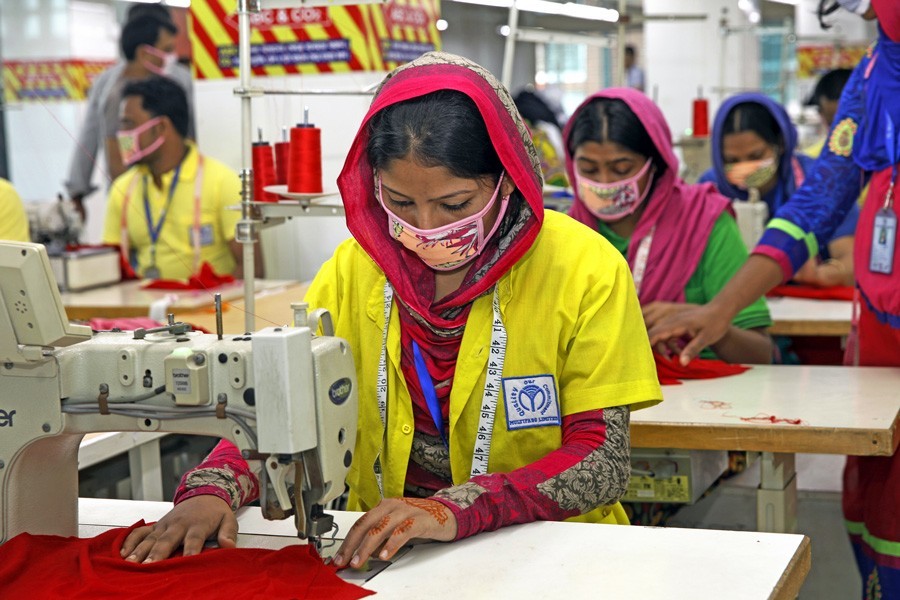The ratio of female workers' participation in the ready-made garments (RMG) sector, so long known as a women-driven one, has seen a decline in the recent years. In 2005-2012, their employment growth was 4.01 per cent which came down to 3.3 per cent in 2012-2016 period, a survey report says.
What is worrying is that the female workers are becoming less knowledgeable about technology, which is decreasing their participation in the sector. It was found they are less knowledgeable about operating different machines compared to their male counterparts. The woman workers particularly lack technology training and suffer from social insecurity. That's why their number in the sector is dwindling.
In social compliance issues in Bangladesh, RMG sector has seen considerable progress but in economic issues, up-gradation has been slow. Up-gradation in social issues is very much significant as rights groups and buyers are giving constant pressures.
A high level of gender imbalance continues at the management level as managers of the factories are overwhelmingly males. Though the size of RMG enterprises, in terms of number of workers, has getting marginally bigger, overall gender balance among production workers in such enterprises has become less female dominated. Such uneven situation poses a real threat to the largest export-earning sector to stay competitive.
An earlier study pointed out a wide range of discriminatory practices and harassment that women are subjected to in the garment sector. It revealed how disparity prevails in the numbers of men and women promoted to supervisory positions. This discriminatory practice extends to the trade unions, where the number of women representatives is far less than their male counterparts in the country.
At the same time, while such women have no choice but to take on the extra work through overtime to earn a modest income at the cost of their health, they are the ones who get fewer facilities and amenities such maternity leaves, provisions for women's special needs, the number of toilets for them etc. On top of this, they have to encounter pervasive sexual harassment on a daily basis.
There is no denying the fact that women constitute a big portion of the country's apparel industry workers. Achieving gender equality is a top priority of the incumbent government. The RMG sector employs four million workers, the majority of whom are women. The percentage of females in the sector is waning as the industry is going through a series of structural transformations.
In fact, declining trend in global demand and prices of apparel items, rise in local cost of doing business and currency appreciation against the US dollar are posing as a threat to go for much-needed up-gradation the apparel sector requires. In today's free market economy, buyers will source products from where they get lower prices. But there are some constraints in Bangladesh regarding lead time as well as infrastructure.
Then again, skills in Bangladesh have not reached a level where factory owners can negotiate with buyers individually. As a result, things are not proceeding in the right direction as was expected. The buyers still largely depend on the sprawling buying houses in the country.
The country's apparel industry should make coordinated efforts in order to achieve a more flexible, demand-driven and inclusive skill development system -- both for males and females. Special attention needs to be given to make the country's female workforce tech-savvy. It is the women, after all, who are contributing the most to the industry, but are discriminated against the most.


